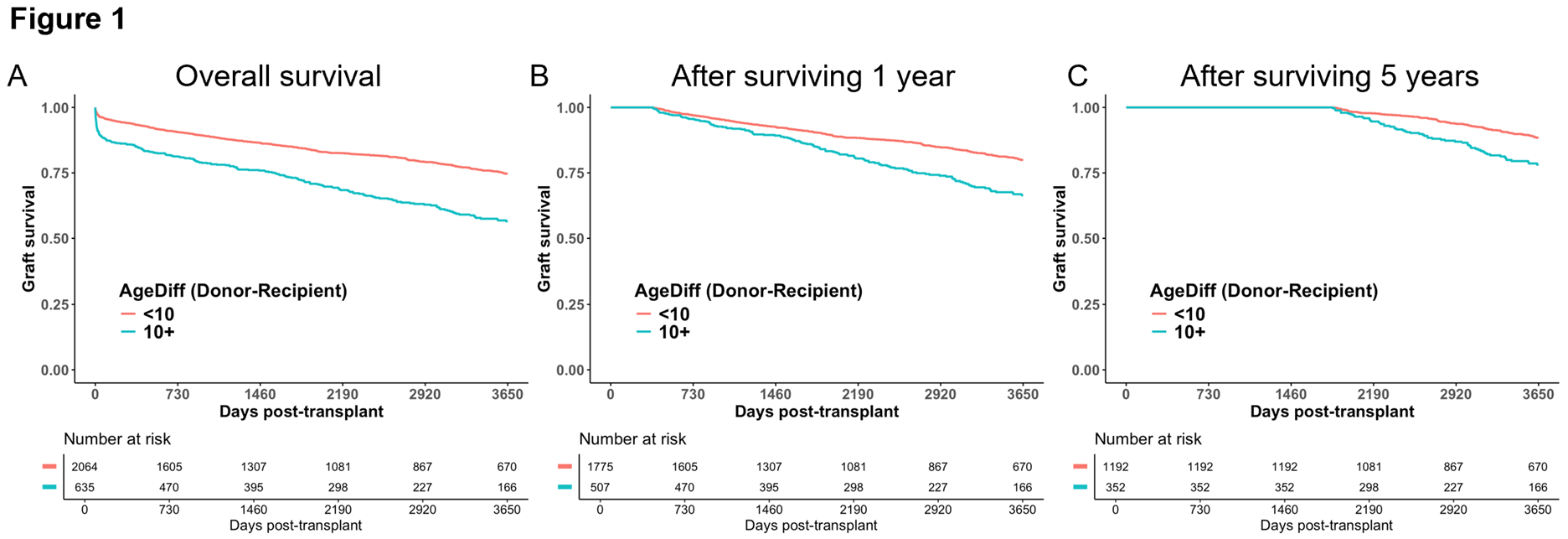Age matching improves graft survival in adolescent liver transplantation
Amanda Jensen1, Toshihiro Nakayama1, Kazunari Sasaki1, Noelle Ebel1, Varvara Kirchner1.
1Division of Abdominal Transplant Sugery, Stanford Health Care, Palo Alto, CA, United States
Purpose: Pediatric liver transplant recipients have historically demonstrated excellent long-term survival. However, not much is known regarding how the difference in age between donor and recipient impact the long-term graft survival. In adult liver transplantation, donor-recipient age matching has been demonstrated to impact graft survival in both the short and long term, suggesting that this factor may also play a role in pediatric, especially adolescent outcomes. The purpose of this analysis was to identify a potential area for improvement in care that would increase even further the longevity of graft survival and ensure the most effective use of donated organs.
Methods: The United Network of Organ Sharing database was reviewed for pediatric deceased donor liver transplant patients 10-17 years of age undergoing liver transplantation from 2000-2024. Recipients were divided by age difference of less than 10 years and age difference of 10+ years. Primary outcomes examined included 5-year graft survival from liver transplant and conditional survival after surviving 1 and 5 years. Cofounders examined included type of graft, age of donor, cold ischemia time, pediatric diagnosis, PELD score, and time on wait list.
Results: There was a total of 2,699 patients included. By group, 2,064 patients had age difference between recipient and donor of less than 10 years and 635 patients had an age difference between recipient and donor of 10+ years. Five-year graft survival was 84.4% vs. 72.3% with <10 and 10+ years age difference respectively (p<0.001; Figure 1-A). At 1 year, conditional 5-year relative survival was 88.4% vs. 80.5% with <10 years and 10+ year age difference respectively (p<0.001; Figure 1-B). At 5 years, conditional 5-year relative survival was 88.5% vs. 78.1% at <10 and 10+ years respectively (p<0.001; Figure 1-C).
Conclusions: If patient is stable, we should age-match deceased donor livers to adolescent recipients when able. Long term graft survival was demonstrated to be superior at all time points when donor-recipient age difference was less than 10 years.

Stanford Transplant Outcomes Research Center.
[1] pediatric liver transplantation
[2] age-matching
[3] graft survival